- What to Expect from Alyssum Honey 2 Weeks After Picking – Tips for Healthy Seedling Development
- Appearance:
- Taste:
- Health Benefits:
- Seedling Development:
- Conclusion:
- Importance of Alyssum Honey for Seedling Development
- Rich in Nutrients
- Promotes Root Growth
- Boosts Immune System
- Enhances Metabolism
- Improves Overall Plant Health
- Factors Affecting Seedling Growth After Picking Alyssum Honey
- 1. Temperature
- 2. Light
- 3. Watering
- 4. Nutrients
- 5. Air Circulation
- 6. Transplanting
- 7. Pest and Disease Control
- 8. Patience and Observation
- Signs of Healthy Seedling Development After 2 Weeks
- Common Issues and Solutions for Seedling Development
- 1. Insufficient Watering
- 2. Overwatering
- 3. Lack of Sunlight
- 4. Poor Soil Quality
- 5. Pests and Diseases
- 6. Improper Transplanting
- 7. Temperature Extremes
- 8. Nutrient Deficiencies
- 9. Competition with Weeds
- 10. Improper Thinning
- Best Practices for Alyssum Honey Seedling Care
- 1. Provide Adequate Light
- 2. Water Regularly
- 3. Fertilize appropriately
- 4. Keep temperatures consistent
- 5. Transplant carefully
- 6. Protect from pests
- 7. Monitor and adjust
- How to Enhance Alyssum Honey’s Benefits for Seedlings
- 1. Use Raw Alyssum Honey
- 2. Mix with Water
- 3. Apply as a Foliar Spray
- 4. Combine with Organic Fertilizer
- 5. Monitor Moisture Levels
- 6. Adjust Honey Concentration
- 7. Consider Other Plant Nutrients
- Harvesting Alyssum Honey and its Impact on Seedling Development
- Introduction
- 1. Picking Alyssum Honey
- 2. Impact on Seedling Development
- 3. Tips for Healthy Seedling Development
- Conclusion
- Frequently Asked Questions about Alyssum Honey and Seedlings
- 1. What is Alyssum honey?
- 2. How is Alyssum honey different from other types of honey?
- 3. Can Alyssum honey help with seedling development?
- 4. How should Alyssum honey be used for seedlings?
- 5. Can Alyssum honey be used for all types of seedlings?
- 6. Are there any potential risks or side effects of using Alyssum honey for seedlings?
- Questions and Answers:
- What is Alyssum honey?
- How long does it take to pick Alyssum honey?
- What are the benefits of Alyssum honey for seedling development?
- How should Alyssum honey be stored after picking?
- Can Alyssum honey be used for purposes other than seedling development?
- Videos: How to Grow Echinacea from Seed
Alyssum honey is a unique variety of honey that is known for its distinct flavor and health benefits. Made from the nectar of Alyssum flowers, this honey is rich in vitamins, minerals, and antioxidants. It is also known for its antibacterial and antifungal properties, making it a popular choice for many health-conscious individuals.
After picking Alyssum honey, it is important to understand what to expect in terms of its development and how to care for it. Two weeks after picking, Alyssum honey should start to show signs of healthy seedling development. This is an exciting time as the honey begins to take on a more solid consistency and its color deepens.
During this period, it is important to provide the right conditions for the honey to develop into healthy seedlings. This includes placing the honey in a warm and sunny spot, ensuring it is protected from extreme temperatures and moisture. It is also important to regularly monitor the honey’s progress and make any necessary adjustments to ensure its development is on track.
Overall, Alyssum honey is a unique and valuable product with many benefits. Understanding what to expect from it two weeks after picking and providing the right conditions for healthy seedling development is crucial in ensuring the honey reaches its full potential. By following these tips, you can enjoy the rich flavor and health benefits of Alyssum honey for years to come.
What to Expect from Alyssum Honey 2 Weeks After Picking – Tips for Healthy Seedling Development
Alyssum honey is known for its unique flavor and numerous health benefits. When picking Alyssum honey, it is important to understand what to expect in terms of its characteristics and how it can contribute to healthy seedling development. Here are some tips to help you make the most of your Alyssum honey:
Appearance:
Alyssum honey typically has a light golden color, with shades ranging from pale yellow to amber. It has a smooth and creamy texture, making it easy to spread on bread or use in various recipes.
Taste:
The taste of Alyssum honey can vary depending on the region where it is harvested, but it generally has a delicate, floral flavor with hints of citrus. It is known for its mild sweetness, making it a popular choice for those who prefer a more subtle honey taste.
Health Benefits:
Alyssum honey is rich in antioxidants, vitamins, and minerals, making it beneficial for overall health. It has antibacterial properties and can help boost the immune system. Additionally, Alyssum honey is known to aid in digestion and can soothe coughs and sore throats.
Seedling Development:
Alyssum honey can also be used in seedling development to promote healthy growth. Here are some tips to utilize Alyssum honey effectively:
- Mix a small amount of Alyssum honey with water to create a diluted solution.
- Use a spray bottle to mist the seedlings with the diluted honey solution. This will provide the seedlings with nutrients and help prevent diseases.
- Apply the honey solution every two weeks to ensure consistent nourishment for the seedlings.
- Monitor the growth of the seedlings and adjust the honey solution accordingly. If the seedlings show signs of overgrowth or nutrient deficiencies, adjust the concentration of the honey solution.
Conclusion:
Alyssum honey offers a delicious taste and numerous health benefits. When used in seedling development, it can contribute to healthy growth and prevent diseases. Follow the tips mentioned above to make the most of your Alyssum honey and promote robust seedling development.
Importance of Alyssum Honey for Seedling Development
Alyssum honey is known for its numerous health benefits and plays a crucial role in seedling development. The honey is produced by bees that collect nectar from Alyssum flowers, a rich source of essential nutrients. Whether you are a beginner or an experienced gardener, using Alyssum honey can greatly enhance the growth and vitality of your seedlings.
Rich in Nutrients
Alyssum honey contains a wide range of nutrients that are essential for seedling development. It is rich in carbohydrates, proteins, vitamins, minerals, and antioxidants, all of which contribute to the overall health and vigor of seedlings. These nutrients support growth and provide the necessary energy for the early stages of plant development.
Promotes Root Growth
The presence of certain enzymes and growth factors in Alyssum honey stimulates root growth in seedlings. This is especially important during the initial stages of seedling development when strong and healthy root systems are crucial for nutrient uptake and water absorption. Adequate root growth sets the foundation for robust plant growth and ensures the plant’s ability to withstand environmental stresses.
Boosts Immune System
Seedlings are vulnerable to diseases and pests, which can hinder their growth and survival. Alyssum honey contains antimicrobial and antifungal properties that help boost the immune system of seedlings. By supporting a strong and healthy immune system, Alyssum honey protects the seedlings from common diseases and enables them to thrive in optimal conditions.
Enhances Metabolism
Alyssum honey provides a natural energy boost to seedlings by enhancing their metabolism. The carbohydrates present in the honey are a ready source of energy that supports cellular processes and fuels growth and development. This increased metabolic activity enables the seedlings to efficiently convert nutrients into biomass, leading to robust and healthy plant growth.
Improves Overall Plant Health
Regular use of Alyssum honey in seedling development leads to improved overall plant health. Seedlings that receive the necessary nutrients, have strong root systems, and a boosted immune system are better equipped to face environmental challenges, resist diseases, and produce abundant yields. Alyssum honey acts as a natural plant tonic, promoting vigorous growth and contributing to the long-term health of the seedlings.
In conclusion, Alyssum honey is a valuable resource for seedling development, providing essential nutrients, promoting root growth, boosting the immune system, enhancing metabolism, and improving overall plant health. By incorporating Alyssum honey into your seedling care routine, you can ensure healthy and vibrant plants for your garden or nursery.
Factors Affecting Seedling Growth After Picking Alyssum Honey
After picking alyssum honey, there are several important factors that can affect the subsequent growth and development of seedlings. Ensuring proper care and providing optimum conditions for these seedlings will greatly contribute to their overall health and vitality.
1. Temperature
Temperature plays a critical role in seedling growth. Alyssum honey seedlings require relatively warm temperatures to thrive. It is important to provide a consistent temperature range of 70 to 75 degrees Fahrenheit (21 to 24 degrees Celsius) for optimal growth.
2. Light
Adequate light is crucial for successful seedling development. Alyssum honey seedlings require approximately 12 to 16 hours of bright, indirect sunlight per day. If natural light is insufficient, supplemental grow lights can be used to provide the necessary light intensity.
3. Watering
Proper watering is essential for the healthy growth of alyssum honey seedlings. It is important to provide a consistent level of moisture in the soil, avoiding both excessive dryness and over-watering. The soil should be evenly moist, but not waterlogged, to prevent root rot and other issues.
4. Nutrients
Seedlings require a balanced supply of essential nutrients for healthy growth. Using a well-draining potting mix supplemented with an organic fertilizer or compost can provide the necessary nutrients for alyssum honey seedlings. It is important to follow the recommended dosage and application instructions to avoid nutrient imbalances or burn.
5. Air Circulation
Good air circulation is important for preventing diseases and maintaining overall plant health. Adequate ventilation in the growing area will help reduce the risk of fungal infections and ensure proper transpiration. Avoid overcrowding seedlings and provide enough space between them for optimal airflow.
6. Transplanting
Transplanting alyssum honey seedlings into larger containers or outdoor garden beds should be done carefully to minimize stress and root damage. Ensure the new environment has the appropriate conditions, including adequate sunlight, soil moisture, and protection from harsh weather conditions.
7. Pest and Disease Control
Regularly inspecting alyssum honey seedlings for pests and diseases is crucial for maintaining their health. Common pests such as aphids, mealybugs, and fungal diseases like powdery mildew can significantly impact seedling growth. Use organic pest control methods or consult with a professional if necessary.
8. Patience and Observation
Lastly, it is important to have patience and observe the growth of alyssum honey seedlings closely. Different factors can impact the growth rate, and each individual seedling may have unique requirements. Regularly monitor and adjust care practices as needed to promote healthy development.
By considering these factors and providing appropriate care, Alyssum honey seedlings have a better chance of developing into healthy, robust plants.
Signs of Healthy Seedling Development After 2 Weeks
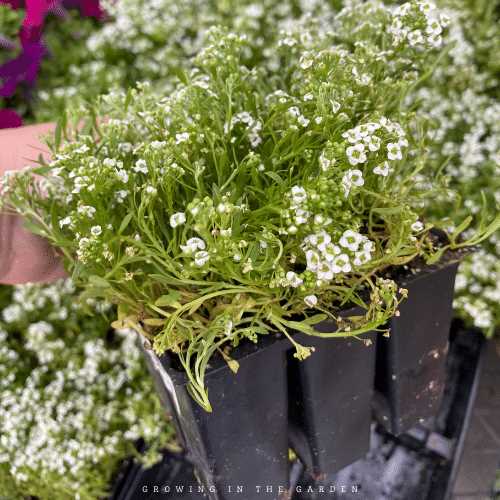
After picking Alyssum honey seeds, it is important to monitor the growth and development of the seedlings. Here are some signs to look for to ensure healthy seedling development after 2 weeks:
- Strong and healthy stems: Healthy seedlings typically have sturdy stems that stand upright without bending or drooping.
- Root growth: Gently lift a seedling from the soil to check for root growth. Healthy seedlings should have well-developed root systems.
- Leaf formation: Look for the emergence of new leaves. Healthy seedlings will have vibrant green leaves that are not wilted or yellowing.
- Uniform growth: The seedlings should be growing at a relatively even pace. Uneven growth can be a sign of nutrient deficiencies or environmental stress.
- No signs of disease or pests: Healthy seedlings will not show any signs of disease, such as discoloration, spots, or wilting. They should also be free from pests, such as aphids or mealybugs.
Monitoring these signs will help ensure that the seedlings are developing properly and will have a higher chance of surviving and thriving in the future. If any issues arise, it is important to address them promptly to prevent further damage to the seedlings.
Common Issues and Solutions for Seedling Development
1. Insufficient Watering
One common issue for seedling development is insufficient watering. If seedlings are not receiving enough water, they may become dehydrated and wilted, which can stunt their growth or even lead to their death.
Solution: Ensure that seedlings are watered regularly and adequately. The soil should be kept moist, but not overly saturated, as excessive water can also be harmful. Regularly check the soil moisture by inserting your finger into the soil up to the knuckle – if it feels dry, it’s time to water the seedlings.
2. Overwatering
Overwatering is another common issue that can hinder seedling development. When seedlings are overwatered, the roots can become waterlogged and lack oxygen, leading to root rot and poor growth.
Solution: Allow the soil to dry out between watering sessions to prevent overwatering. Use well-draining soil and pots with drainage holes to help excess water escape. Avoid watering on a fixed schedule and instead, water only when the soil feels dry.
3. Lack of Sunlight
Insufficient sunlight is a common problem for seedling development. Without enough light, seedlings may become pale, leggy, and weak, and they may struggle to photosynthesize properly.
Solution: Place seedlings in a location that receives ample sunlight or use artificial grow lights to supplement the natural light. Seedlings generally require around 12-16 hours of light per day. Monitor the seedlings closely and adjust the light source as needed to maintain healthy growth.
4. Poor Soil Quality
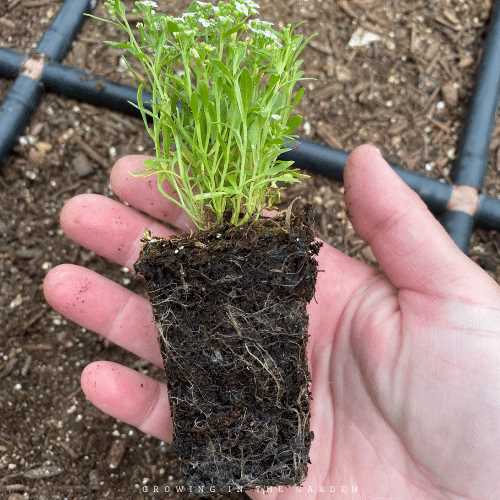
Poor soil quality can negatively affect seedling development. Soil that lacks nutrients or has a poor texture can hinder root growth and nutrient uptake.
Solution: Use a high-quality seed-starting mix or enriched potting soil that is well-draining and rich in nutrients. Add organic matter, such as compost or worm castings, to improve soil structure and fertility. Regularly monitor nutrient levels and fertilize as needed.
5. Pests and Diseases
Pests and diseases can pose a significant threat to seedling development, as they can damage or destroy the delicate seedlings.
Solution: Regularly inspect seedlings for pests such as aphids, fungus gnats, or mites. Remove any affected seedlings and treat the remaining ones with appropriate organic pest control methods. Practice good hygiene by cleaning tools, pots, and trays to prevent the spread of diseases. Provide good air circulation around the seedlings to reduce the risk of fungal infections.
6. Improper Transplanting
Transplanting seedlings incorrectly can cause stress and damage to the young plants, which can impede their growth and development.
Solution: When transplanting seedlings, handle them gently and avoid damaging the roots. Use a proper technique, such as the “dig and drop” or “trenching” method, to minimize disturbance to the roots. Ensure that the soil in the new location is prepared and suitable for the particular seedlings. Water the seedlings thoroughly after transplanting to help them settle into their new environment.
7. Temperature Extremes
Extreme temperatures can impact seedling development, causing stunted growth, wilting, or even death.
Solution: Provide a stable and suitable temperature range for seedlings. Most seedlings prefer temperatures between 65°F (18°C) and 75°F (24°C). Avoid exposing seedlings to cold drafts or placing them in direct sunlight without proper ventilation. Use protective measures such as cloches or row covers to shield seedlings from extreme temperatures.
8. Nutrient Deficiencies
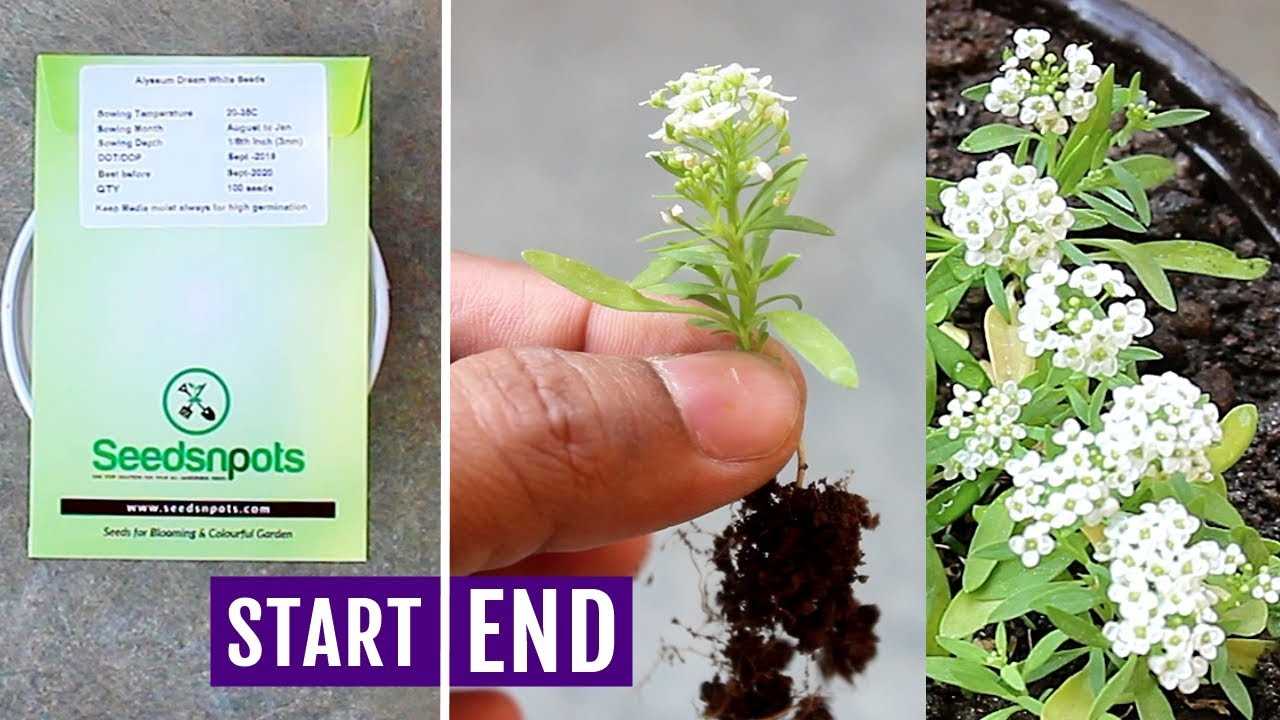
Nutrient deficiencies can hinder seedling development and result in stunted growth, leaf discoloration, and other signs of poor health.
Solution: Monitor nutrient levels in the soil and provide appropriate fertilization based on the specific needs of the seedlings. Use a balanced, soluble fertilizer or organic amendments to address any deficiencies. Follow the recommended application rates and timing to prevent nutrient burn.
9. Competition with Weeds
Weeds can compete with seedlings for essential nutrients, water, and sunlight, which can slow down seedling development.
Solution: Keep the area around the seedlings free from weeds by regularly removing them by hand or using appropriate organic weed control methods. Mulching with organic materials can also help suppress weed growth and conserve soil moisture.
10. Improper Thinning
Overcrowded seedlings can struggle to compete for resources and may not develop properly.
Solution: Thin out excess seedlings, leaving only the strongest and healthiest ones to grow. This will allow the remaining seedlings to have sufficient space, light, and nutrients to thrive. Remember to thin at an early stage to minimize root disturbance.
| Issue | Solution |
|---|---|
| Insufficient Watering | Ensure regular and adequate watering |
| Overwatering | Allow soil to dry out between watering sessions |
| Lack of Sunlight | Provide ample sunlight or artificial grow lights |
| Poor Soil Quality | Use high-quality soil and add organic matter |
| Pests and Diseases | Regularly inspect, remove affected seedlings, practice good hygiene |
| Improper Transplanting | Handle gently, transplant with proper technique, water thoroughly |
| Temperature Extremes | Provide stable temperature range, use protective measures |
| Nutrient Deficiencies | Monitor nutrient levels, provide appropriate fertilization |
| Competition with Weeds | Regularly remove weeds, mulch to suppress growth |
| Improper Thinning | Thin out excess seedlings at an early stage |
Best Practices for Alyssum Honey Seedling Care
Growing healthy seedlings is an essential part of successful gardening. Here are some best practices for caring for Alyssum Honey seedlings two weeks after picking:
1. Provide Adequate Light
Alyssum Honey seedlings require plenty of light to grow strong and healthy. Place them in a location where they will receive at least 6-8 hours of direct sunlight per day. If growing indoors, use artificial grow lights to supplement natural light.
2. Water Regularly
Keep the soil moist but not waterlogged. Water the seedlings regularly, preferably in the morning. Check the soil moisture level by inserting your finger into the soil up to the first knuckle. If it feels dry, it’s time to water. Avoid excessive watering, as it can lead to root rot.
3. Fertilize appropriately
Alyssum Honey seedlings benefit from regular fertilization. Use a balanced, water-soluble fertilizer according to the manufacturer’s instructions. Start fertilizing the seedlings two weeks after picking, and repeat every two weeks thereafter. Over-fertilization can harm the seedlings, so be cautious and follow recommended dosage.
4. Keep temperatures consistent
Alyssum Honey seedlings prefer temperatures between 60°F and 75°F (15°C to 24°C). Avoid exposing the seedlings to drastic temperature fluctuations or extreme heat or cold. Use a thermometer to monitor the temperature in their growing environment and make adjustments as necessary.
5. Transplant carefully
If you plan to transplant the Alyssum Honey seedlings, do so with care. Wait until they have developed a strong root system and at least two sets of true leaves. When moving them to their final location, gently loosen the roots and plant them at the same depth as they were in the original container. Water the seedlings immediately after transplanting to reduce stress.
6. Protect from pests
Keep an eye out for common garden pests like aphids, slugs, and snails. Inspect the seedlings regularly and take appropriate actions to prevent or control pest infestations. Organic pest control methods such as handpicking pests or using insecticidal soap can be effective.
7. Monitor and adjust
Pay close attention to your Alyssum Honey seedlings’ growth and appearance. If you notice any signs of nutrient deficiencies, pests, or diseases, take immediate action to address the issue. Adjust watering, fertilizing, or other care practices as necessary to ensure the health and vigor of the seedlings.
By following these best practices, you can promote the healthy development of your Alyssum Honey seedlings and set them up for success in your garden or landscape.
How to Enhance Alyssum Honey’s Benefits for Seedlings
Alyssum honey is a popular choice for seedling development due to its numerous benefits. However, there are methods to enhance these benefits even further for optimal seedling growth. Consider the following tips:
1. Use Raw Alyssum Honey
Raw honey, straight from the beehive, contains all the natural enzymes, antioxidants, and nutrients that contribute to healthy seedling development. Make sure to choose raw Alyssum honey for the best results.
2. Mix with Water
In order to provide the right balance of nutrients and moisture, mix a small amount of raw Alyssum honey with water. This diluted solution can be used to water the seedlings regularly.
3. Apply as a Foliar Spray
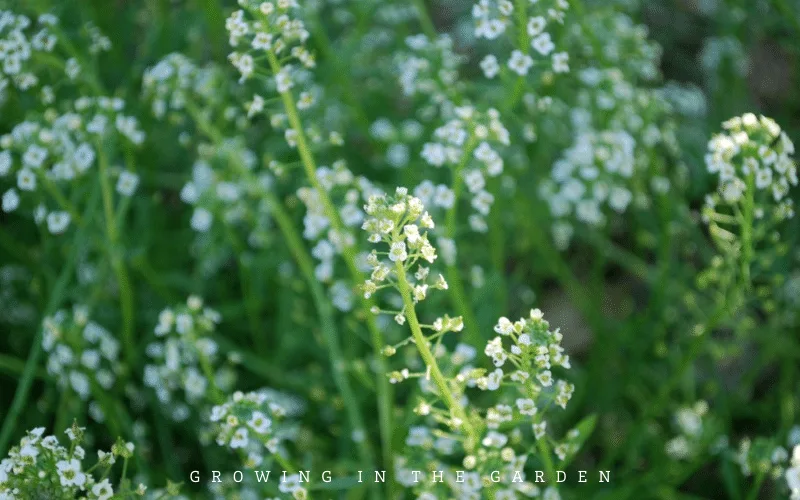
For additional benefits, consider using Alyssum honey as a foliar spray. Dilute the honey in water and use a spray bottle to mist the seedlings with the solution. This method allows the honey to be absorbed through the leaves, providing direct nutrition to the seedlings.
4. Combine with Organic Fertilizer
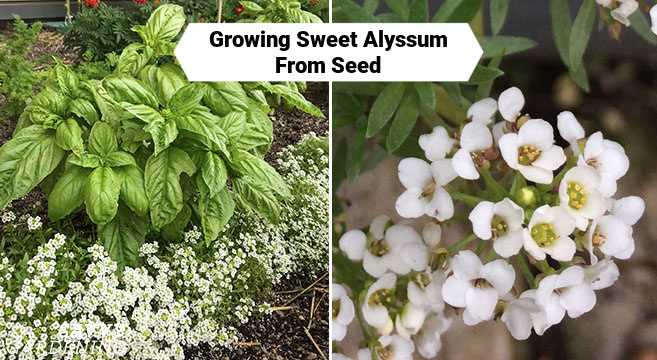
If you’re looking for an extra boost, mix Alyssum honey with organic fertilizer. This combination provides both the natural nutrients from the honey and the additional nutrients from the fertilizer, ensuring optimal growth for your seedlings.
5. Monitor Moisture Levels
It’s important to keep a close eye on the moisture levels when using Alyssum honey. While honey can provide beneficial moisture to the seedlings, it’s essential to prevent overwatering, as excess moisture can lead to root rot. Use a moisture meter or monitor the soil’s moisture levels regularly to maintain the right balance.
6. Adjust Honey Concentration
Depending on the seedlings’ needs, you may need to adjust the concentration of Alyssum honey in your solutions. It’s recommended to start with a lower concentration and gradually increase it if needed. This allows you to fine-tune the benefits according to your seedlings’ specific requirements.
7. Consider Other Plant Nutrients
While Alyssum honey is beneficial for seedling development, it’s important to remember that it’s not the sole source of nutrition. In addition to honey, provide your seedlings with a balanced diet of other essential plant nutrients, such as nitrogen, phosphorus, and potassium. This will ensure comprehensive growth and development.
By following these tips, you can maximize the benefits of Alyssum honey for healthy seedling development. Remember to observe the seedlings closely and make adjustments as necessary to provide them with the best possible care.
Harvesting Alyssum Honey and its Impact on Seedling Development
Introduction
Alyssum honey is known for its unique taste and health benefits. Harvesting Alyssum honey at the right time and using proper techniques can have a significant impact on the development of seedlings. In this article, we will discuss the process of harvesting Alyssum honey and how it can positively affect seedling growth and development.
1. Picking Alyssum Honey
Picking Alyssum honey at the right time is crucial for its quality and impact on seedling development. The honey should be harvested approximately two weeks after the bees have collected nectar from the Alyssum flowers. This allows enough time for the honey to mature and enhance its flavor and nutritional content.
During the picking process, it is essential to handle the honeycomb delicately to avoid damaging the cells and causing leakage. Using a honey extractor or a gentle manual extraction method can help separate the honey from the honeycomb without compromising its quality.
2. Impact on Seedling Development
Alyssum honey contains various nutrients and beneficial compounds that can support the growth and development of seedlings. Some of the key benefits include:
- Antioxidant properties: Alyssum honey is rich in antioxidants, which can help protect seedlings from oxidative stress and damage caused by free radicals.
- Microbial activity: The antimicrobial properties of Alyssum honey can help protect seedlings from harmful pathogens and improve their overall health.
- Nutritional content: Alyssum honey contains essential vitamins, minerals, and amino acids that are important for seedling growth and development.
When used as a natural rooting hormone, Alyssum honey can promote root development in seedlings, resulting in stronger and healthier plants. It can also improve the overall vigor of seedlings, enhancing their ability to withstand environmental stressors.
3. Tips for Healthy Seedling Development
To maximize the benefits of Alyssum honey on seedling development, consider the following tips:
- Proper dilution: Dilute Alyssum honey with water before applying it as a rooting hormone to avoid overwhelming seedlings with concentrated sugars.
- Timing: Apply Alyssum honey as a rooting hormone during the early stages of seedling development for optimal results.
- Even distribution: Apply Alyssum honey evenly on the seedling’s root system to ensure all roots receive the benefits.
- Regular monitoring: Monitor the seedlings closely for any signs of improvement or issues. Adjust the application of Alyssum honey accordingly.
Conclusion
Harvesting Alyssum honey at the right time and using it as a rooting hormone can have a positive impact on seedling development. Its antioxidant properties, microbial activity, and nutritional content contribute to stronger and healthier seedlings. By following the tips mentioned in this article, you can ensure the proper use and benefits of Alyssum honey for seedling growth and development.
Frequently Asked Questions about Alyssum Honey and Seedlings
1. What is Alyssum honey?
Alyssum honey is a type of honey made from the nectar of the flowers of the Alyssum plant. It has a light color and a delicate, floral flavor.
2. How is Alyssum honey different from other types of honey?
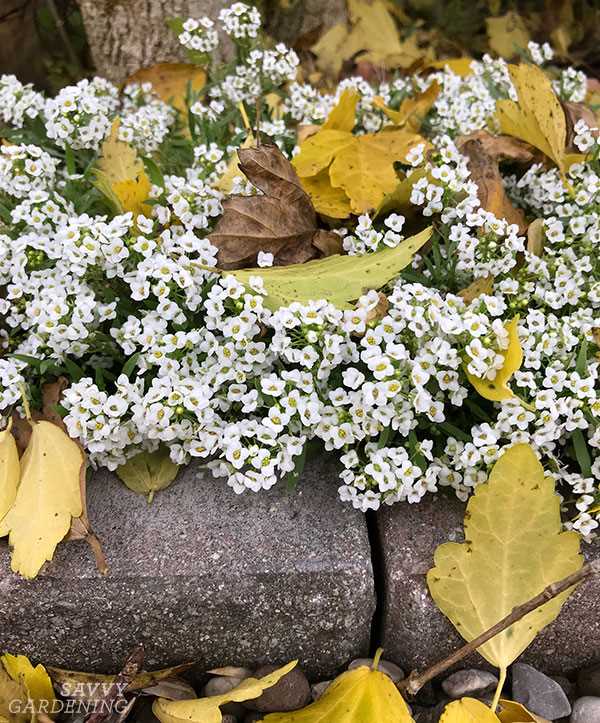
Alyssum honey has a unique flavor profile and aroma that sets it apart from other types of honey. It is known for its floral notes and light, sweet taste.
3. Can Alyssum honey help with seedling development?
Yes, Alyssum honey can be beneficial for healthy seedling development. It provides natural sugars and nutrients that can support the growth and development of young plants.
4. How should Alyssum honey be used for seedlings?
Alyssum honey can be diluted in water and used as a foliar spray for seedlings. It can also be added to the soil or used as a supplement in hydroponic systems. The exact application method may vary depending on the specific needs of the seedlings.
5. Can Alyssum honey be used for all types of seedlings?
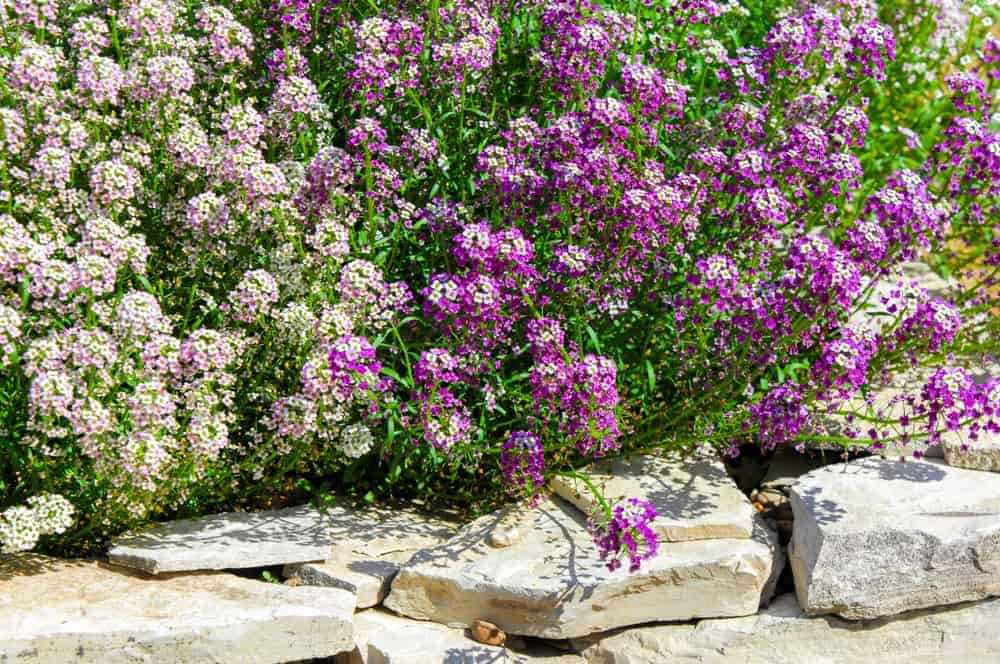
Alyssum honey can be used for a variety of seedlings, but it is particularly beneficial for plants that thrive in nutrient-rich soil and prefer a slightly acidic pH. It is always recommended to conduct a small test on a few seedlings before applying it to a large batch.
6. Are there any potential risks or side effects of using Alyssum honey for seedlings?
Alyssum honey is generally safe for seedlings, but it is important to use it in moderation. Excessive use of honey can attract pests or encourage fungal growth. It is also possible for some seedlings to be allergic to honey, so it is best to monitor the plants for any adverse reactions.
Questions and Answers:
What is Alyssum honey?
Alyssum honey is a type of honey made from the nectar of Alyssum flowers. It has a light, floral taste and is known for its health benefits.
How long does it take to pick Alyssum honey?
Alyssum honey is typically picked about 2 weeks after the flowers have bloomed. This allows the honeybees enough time to gather the nectar and produce the honey.
What are the benefits of Alyssum honey for seedling development?
Alyssum honey is rich in nutrients and has natural antibacterial properties, which can promote healthy seedling development. It provides essential vitamins and minerals that help strengthen the seedlings’ immune system and improve their overall growth.
How should Alyssum honey be stored after picking?
Alyssum honey should be stored in a cool, dry place, away from direct sunlight. It is best to keep it in an airtight container to prevent moisture and other contaminants from getting in.
Can Alyssum honey be used for purposes other than seedling development?
Yes, Alyssum honey can be used for various purposes. It can be enjoyed as a natural sweetener, added to tea or other beverages, used in baking, or even used as a beauty product for its moisturizing and antibacterial properties.







